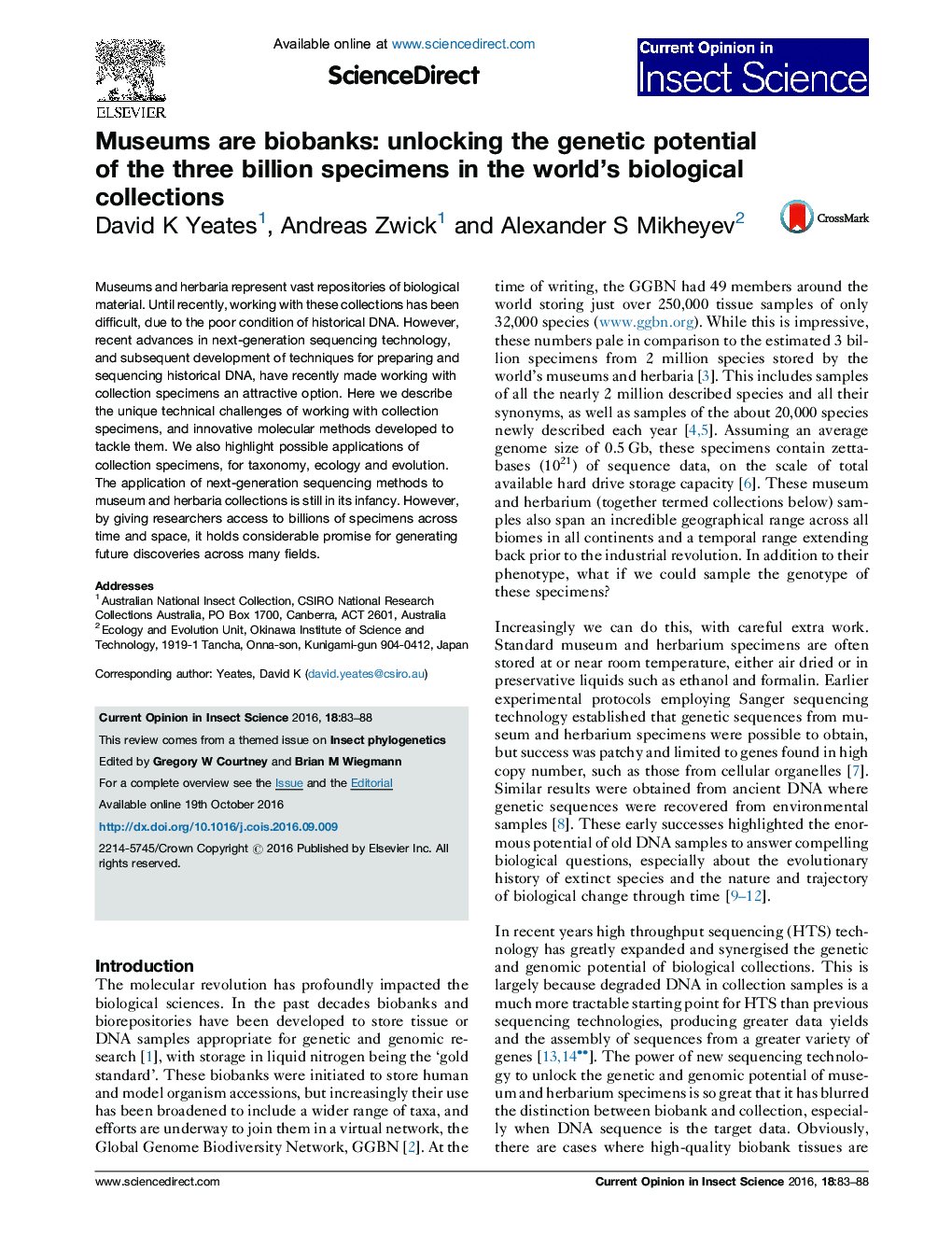| Article ID | Journal | Published Year | Pages | File Type |
|---|---|---|---|---|
| 6373990 | Current Opinion in Insect Science | 2016 | 6 Pages |
Abstract
Museums and herbaria represent vast repositories of biological material. Until recently, working with these collections has been difficult, due to the poor condition of historical DNA. However, recent advances in next-generation sequencing technology, and subsequent development of techniques for preparing and sequencing historical DNA, have recently made working with collection specimens an attractive option. Here we describe the unique technical challenges of working with collection specimens, and innovative molecular methods developed to tackle them. We also highlight possible applications of collection specimens, for taxonomy, ecology and evolution. The application of next-generation sequencing methods to museum and herbaria collections is still in its infancy. However, by giving researchers access to billions of specimens across time and space, it holds considerable promise for generating future discoveries across many fields.
Related Topics
Life Sciences
Agricultural and Biological Sciences
Agronomy and Crop Science
Authors
David K Yeates, Andreas Zwick, Alexander S Mikheyev,
